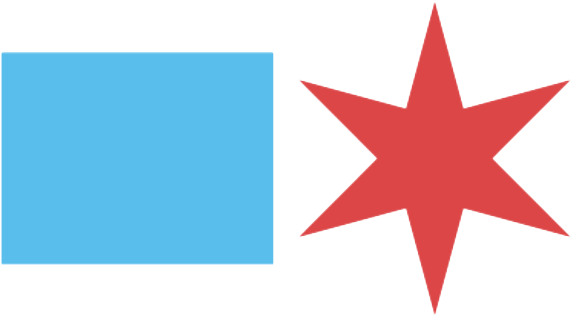MAYOR LIGHTFOOT AND CDPH ANNOUNCE NEARLY $10 MILLION REQUEST FOR PROPOSALS TO ESTABLISH HEALTHY CHICAGO EQUITY ZONES
Regional and community organizations will lead hyper-local strategies to advance health and racial equity, starting with targeted vaccine outreach
COVID-19 Joint Information Center media.coronavirus@cityofchicago.org
CHICAGO — Mayor Lori E. Lightfoot and the Chicago Department of Public Health (CDPH) today announced a Request for Proposals (RFP) to address the impacts of COVID-19 through community-led strategies to promote health and racial equity, starting with targeted vaccine outreach. CDPH has allocated $9.6 million in COVID-19 relief funding from the Centers for Disease Control and Prevention (CDC) to establish Healthy Chicago Equity Zones – six geographic areas covering the entire city that will be led by regional and community organizations.
In 2021, the Healthy Chicago Equity Zones will focus on increasing vaccine uptake in the neighborhoods that have been most impacted by COVID-19. As the city continues to recover from the pandemic, these coalitions will lead hyper-local strategies to confront factors that contribute to health and racial disparities, including healthcare and social service access, food access, housing conditions, community safety, and the physical and built neighborhood environment.
Community-based organizations have played an essential role throughout the pandemic, and their tireless efforts saved lives,” said Mayor Lightfoot. “With Healthy Chicago Equity Zones, we are bringing new resources to local coalitions as they tackle COVID-19 and other longstanding public health challenges in their neighborhoods.
Funding will be divided among up to six regional lead organizations that will provide backbone financial, administrative, and project management support in each of the Equity Zones. The regional leads are required, in turn, to subcontract with at least one community organization in every neighborhood within their region to guide planning and action on local priorities.
In the spring of 2020, when data on COVID-19 cases and mortality showed that certain neighborhoods were disproportionately affected by the outbreak, Mayor Lightfoot established a Racial Equity Rapid Response Team to partner with community groups and direct attention and resources to these hard-hit communities. With support from the City, these groups provided education, communication, testing, treatment, and social service support – tailored to the particular needs of area residents.
Community organizations have also been at the forefront of the City's Protect Chicago Plus initiative, which directed vaccine and other resources to the 15 highest-need communities based on the City’s COVID Vulnerability Index. Community stakeholders worked with the City to host vaccination events, conduct door-to-door outreach, and assist with appointment scheduling and education to increase vaccine confidence and access at the neighborhood level.
After the first six weeks of Protect Chicago Plus implementation, vaccine coverage in priority areas increased over 300% – nearly twice the citywide increase in the same period. With this RFP, Healthy Chicago Equity Zones will scale these successful vaccine equity partnerships across all of Chicago’s hardest hit communities.
“The Vaccine Corps Partnership (VCP) is eager to partner with the City as we work across different sectors to leverage this moment for a healthier, more resilient Chicago,” said Max Clermont, Senior Project Lead with the VCP, which is coordinated by Partners In Health. “The VCP will continue to mobilize the community’s capacity in leading and guiding the transformative solutions needed. We are thrilled with the City’s multi-year commitment to this work, seeding a foundation that can strengthen public health infrastructure long into the future.”
Racial inequities in health outcomes among Chicago residents were present long before the COVID-19 pandemic began. As of 2017, a white Chicagoan lived 8.8 years longer on average than a Black Chicagoan, and life expectancy continues to decline in Black, Latinx, and Asian populations. The primary drivers of the life expectancy gap – chronic disease, opioid overdose, gun-related homicide, infant mortality and HIV/infectious disease – broadly reflect the conditions in which people live and the policies and systems that determine them.
Healthy Chicago 2025, the City’s community health improvement plan launched last fall, outlines strategies to close this racial life expectancy gap. The plan calls upon the City and partners across sectors to support community organizations, particularly in Black and Latinx communities, as they take the lead on strategies that address the root causes of health, including structural racism.
“The pandemic not only illuminated historical inequities but also created new challenges, particularly for Black and Latinx Chicagoans,” said CDPH Commissioner Allison Arwady, M.D. “Our Healthy Chicago 2025 plan recognizes that local organizations know best what’s needed to promote health and racial equity in their neighborhoods. With Healthy Chicago Equity Zones, we are letting communities lead the way.”
In addition to the nearly $10 million initially allocated under this RFP for vaccine equity initiatives, CDPH anticipates future awards so the Healthy Chicago Equity Zones can apply the same targeted, community-driven approaches to other local priorities---from ensuring that people are connected to mental health care, to creating more walkable public spaces, to advocating for policy changes that increase access to healthy food.
The Healthy Chicago Equity Zones RFP is open for applications through May 28, 2021, at noon.
###
